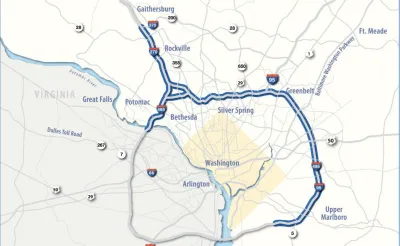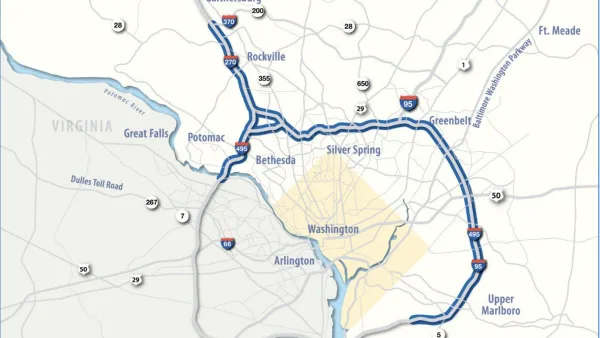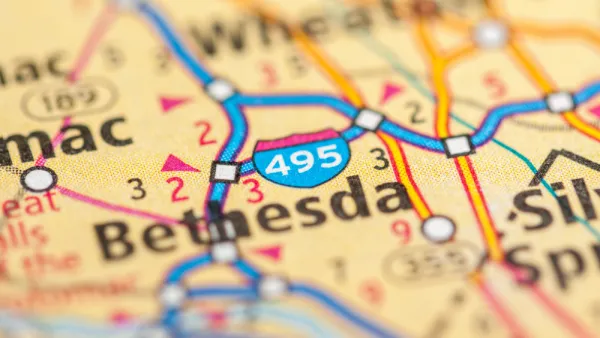Maryland Governor Wes Moore is differentiating his new administration from his predecessor’s, but some projects, like the widening of federal highways in the Capital Beltway, stay the same.

Observers hopeful that new Maryland Governor Wes Moore’s commitment to the defunct Red Line transit project in Baltimore was a sign of a less auto-centric vision for the future of transportation in Maryland might be disappointed.
Gov. Moore is moving forward with a plan to widen parts of the Capital Beltway and Interstate 270—a key piece of former Governor Larry Hogan’s transportation planning agenda for the state. Unlike Hogan’s approach, however, Moore’s vision for the project is scrapping the troubled public-private partnership.
“The Maryland Department of Transportation has applied for a $2.4 billion federal grant that officials said would help the state realize long sought improvements at one of the biggest traffic chokepoints in the Washington region by 2031,” reports Luz Lazo in a paywalled article for the Washington Post.
Lazo adds: “Moore’s plan would rebuild the American Legion Bridge and add managed lanes — such as high-occupancy toll lanes — to parts of the Capital Beltway and Interstate 270, targeting crippling highway congestion at the Virginia state line and in the Maryland suburbs with a focus on transit and more community input, officials said.” Governor Moore claims the widening plan is consistent with his administration’s “Leave No One Behind” agenda. “The transportation network throughout Maryland and the National Capital Region must be able to get people where they need to go in a timely and reliable manner,” said Governor Moore in a press release. “Providing long-desired, equitable transportation solutions in the American Legion Bridge and I-270 corridors is critical to eliminating employment barriers, linking more people to high-demand jobs and stimulating local economies."
The I-495/I-270 Managed Lanes Project has been in the works since 2017, finally gaining federal approval in August 2022 after moving forward in fits and starts over the years and facing local opposition and legal peril.
FULL STORY: Maryland pursues publicly funding Beltway relief project [paywall]

Analysis: Cybertruck Fatality Rate Far Exceeds That of Ford Pinto
The Tesla Cybertruck was recalled seven times last year.

National Parks Layoffs Will Cause Communities to Lose Billions
Thousands of essential park workers were laid off this week, just before the busy spring break season.

Retro-silient?: America’s First “Eco-burb,” The Woodlands Turns 50
A master-planned community north of Houston offers lessons on green infrastructure and resilient design, but falls short of its founder’s lofty affordability and walkability goals.

Test News Post 1
This is a summary

Analysis: Cybertruck Fatality Rate Far Exceeds That of Ford Pinto
The Tesla Cybertruck was recalled seven times last year.

Test News Headline 46
Test for the image on the front page.
Urban Design for Planners 1: Software Tools
This six-course series explores essential urban design concepts using open source software and equips planners with the tools they need to participate fully in the urban design process.
Planning for Universal Design
Learn the tools for implementing Universal Design in planning regulations.
EMC Planning Group, Inc.
Planetizen
Planetizen
Mpact (formerly Rail~Volution)
Great Falls Development Authority, Inc.
HUDs Office of Policy Development and Research
NYU Wagner Graduate School of Public Service



























